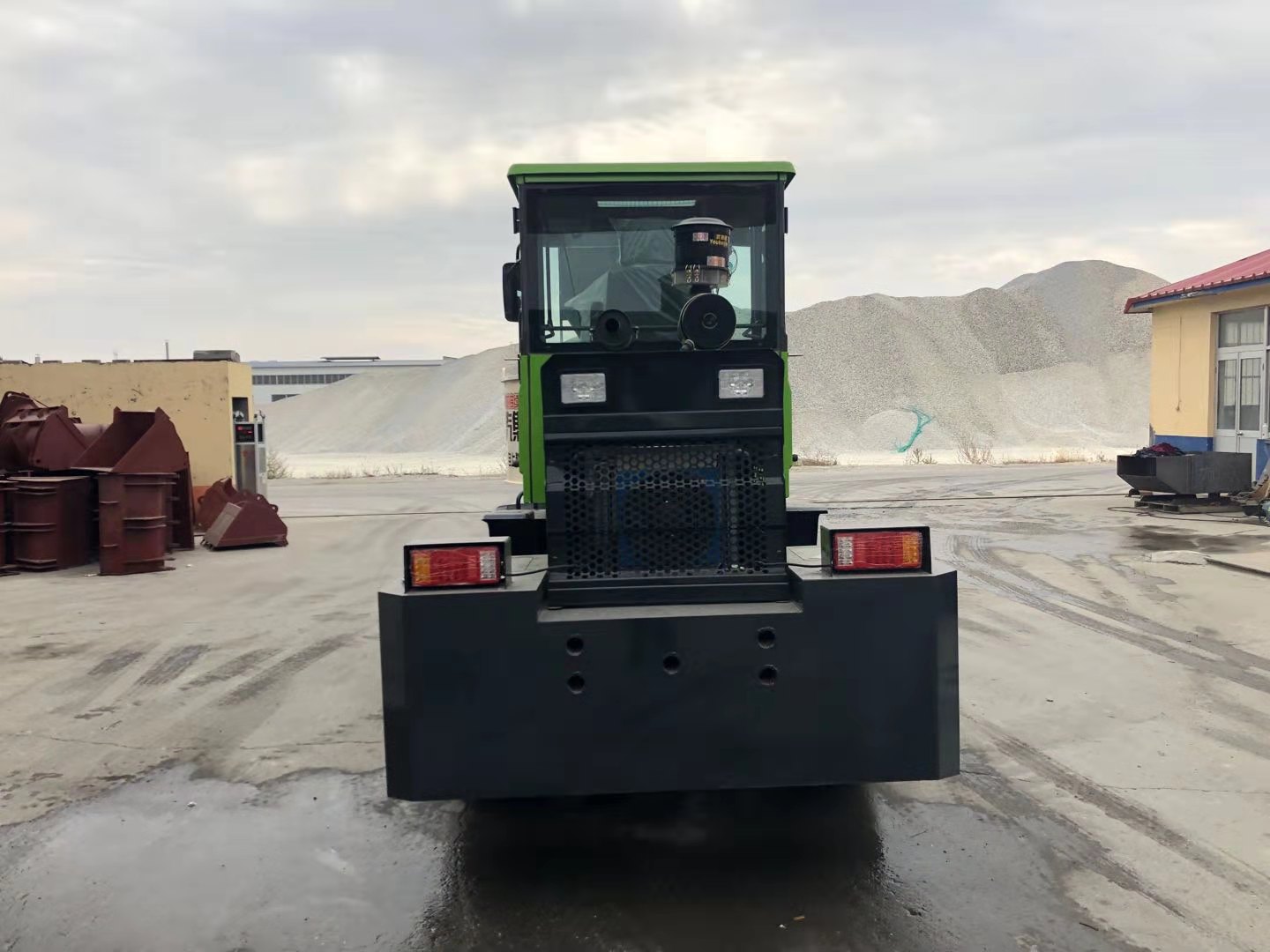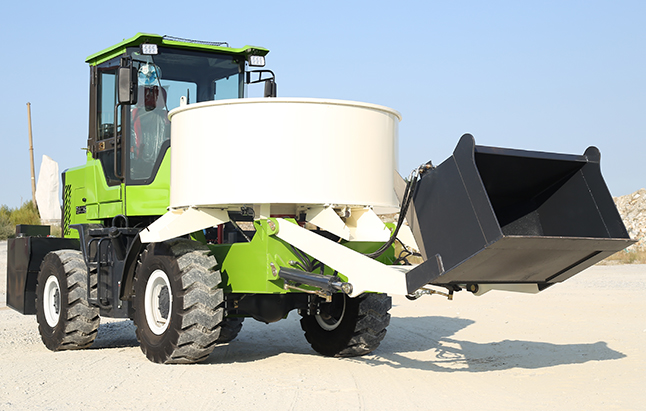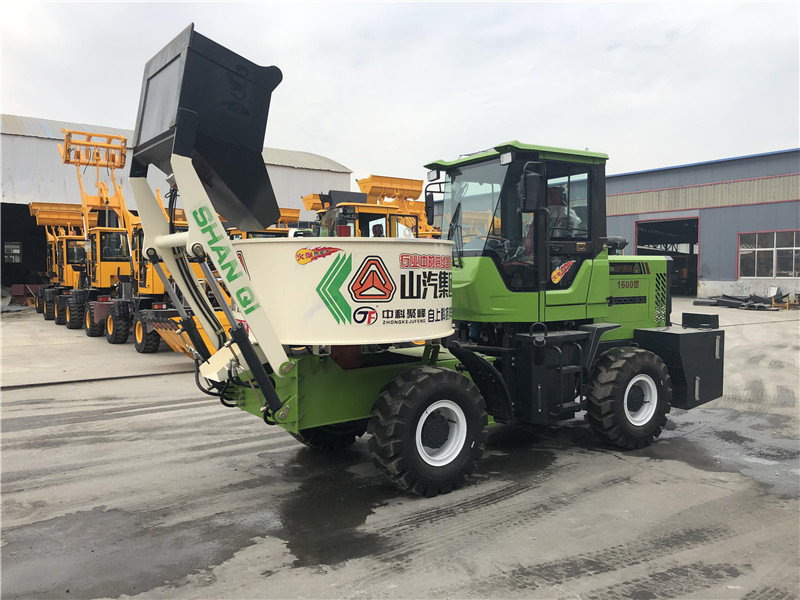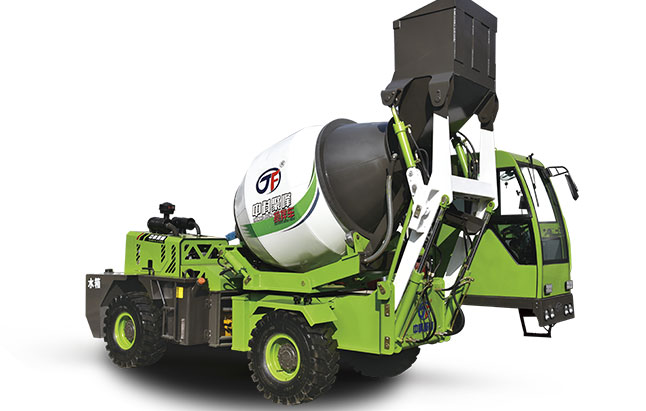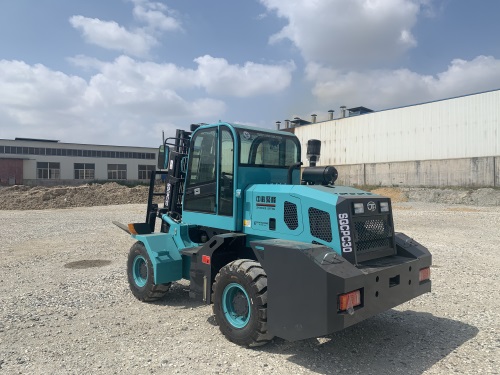1. The pressure of the hydraulic system should be in accordance with the provisions of the operation manual, and should not be adjusted at will. The quality and quantity of hydraulic oil should meet the original requirements.
2、混凝土攪拌車(chē)裝料前,應先排凈拌筒內殘存的積水和雜物。在運輸過(guò)程中要不停的轉動(dòng),以防混凝土離析?;炷翑嚢柽\輸車(chē)到達工地和卸料之前,應先使拌筒全速以14—18轉/分轉動(dòng)1—2分鐘,然后再進(jìn)行反轉卸料。反轉之前,應使攪拌筒停穩不轉。
2. Before the concrete mixer truck is loaded, the residual water and sundries in the mixing drum shall be drained. In the process of transportation, keep rotating to prevent concrete segregation. Before the concrete mixer truck arrives at the construction site and unloads, the mixing drum shall be rotated at full speed at 14-18 rpm for 1-2 minutes, and then reverse unloading shall be carried out. Before reversing, the mixing drum should be stopped stably.
3、環(huán)境溫度高于+25攝氏度,從裝料、運輸、到卸料延續時(shí)間不得超過(guò)60分鐘,環(huán)境溫度低于+25攝氏度,上述時(shí)間不得超過(guò)90分鐘。
3. If the ambient temperature is higher than + 25 ℃, the duration from loading, transportation to unloading shall not exceed 60 minutes; if the ambient temperature is lower than + 25 ℃, the above time shall not exceed 90 minutes.
4、冬期施工時(shí),應切實(shí)做到:開(kāi)機前檢查是否結冰;下班時(shí)認真排除拌筒內及供水系統內殘存積水,關(guān)閉水泵開(kāi)關(guān),將控制手柄置于“停止”位置。
4. During winter construction, it is necessary to check whether there is icing before starting the machine; when off duty, carefully remove the residual water in the mixing drum and water supply system, turn off the water pump switch, and put the control handle at the "stop" position.


5、在施工現場(chǎng)卸料完畢后,應立即用攪拌車(chē)隨帶的軟管沖洗進(jìn)料斗、出料斗、卸料溜槽等處,粘附在車(chē)身各處的污泥及混凝土。在返回攪拌站的途中,應向攪拌筒內注150---200L水以清洗筒壁及葉片粘結的混凝土殘渣。
5. After unloading at the construction site, the inlet hopper, discharge hopper and discharge chute should be flushed with the hose attached to the mixer to remove the sludge and concrete adhering to the vehicle body. On the way back to the mixing station, 150-200l water should be injected into the mixing drum to clean the concrete residue bonded by the cylinder wall and blades.
6、每天工作結束后,司機應負責向攪拌筒內注入清水并高速(14—18轉/分)旋轉5—10分鐘,然后將水排去,以保證筒內清潔。用高壓水清洗攪拌筒各個(gè)部分時(shí),應注意避開(kāi)儀表及操縱桿等部位。壓力水噴嘴與車(chē)身油漆表面間的距離不得小于40厘米。
6. At the end of each day's work, the driver should inject fresh water into the mixing drum and rotate it at high speed (14-18 RPM) for 5-10 minutes, and then drain the water to ensure the cleanness of the drum. When cleaning each part of the mixing drum with high pressure water, pay attention to avoid the instrument and control rod. The distance between the pressure water nozzle and the paint surface of the vehicle body shall not be less than 40 cm.
7、攪拌筒內外積污及殘存的混凝土渣塊時(shí),以及在機修人員進(jìn)入筒內進(jìn)行檢修和焊補作業(yè)時(shí),需先關(guān)閉汽車(chē)發(fā)動(dòng)機,使攪拌筒完全停止轉動(dòng)。在機修人員進(jìn)入筒內工作期間,必須保證拌筒內通風(fēng)良好,空氣新鮮,無(wú)可然氣體及有害灰塵,氧氣供應充足(不得使用純氧)。在筒內使用電動(dòng)工具操作時(shí),操作人員必須有良好的絕緣保護。
7. When removing the dirt inside and outside the mixing drum and the remaining concrete slag, and when the machine maintenance personnel enter the cylinder for maintenance and welding repair, it is necessary to turn off the automobile engine to stop the mixing drum completely. During the period when the machine maintenance personnel enter the cylinder, they must ensure that the mixing drum is well ventilated, the air is fresh, there is no combustible gas and harmful dust, and the oxygen supply is sufficient (pure oxygen is not allowed). When using electric tools in the cylinder, the operator must have good insulation protection.
8、工作時(shí),不得將手伸入旋轉的攪拌筒內,嚴禁將手伸入主卸料溜槽和加長(cháng)卸料溜槽的連接部位,以免發(fā)生事故。
8. When working, do not put your hand into the rotating mixing drum, do not put your hand into the connection between the main discharge chute and the extended discharge chute, so as to avoid accidents.
9、應定期檢查攪拌葉片磨損情況并及時(shí)進(jìn)行修補和換新。
9. The abrasion of mixing blades should be checked regularly and repaired and replaced in time.
10、貫徹各項有關(guān)操作規范?;炷翑嚢柽\輸車(chē)司機必須經(jīng)過(guò)培訓,無(wú)合格證者不得上崗操作。
10. Implement all relevant safety operation specifications. The driver of concrete mixer truck must receive professional training, and those without qualification certificate are not allowed to work.
